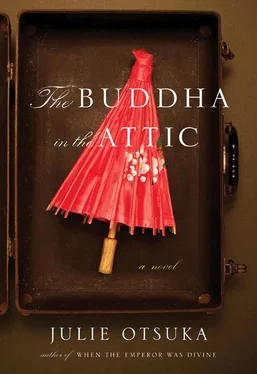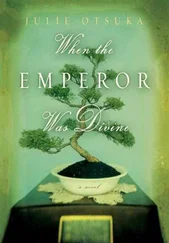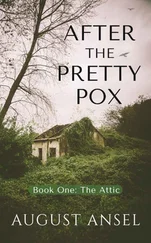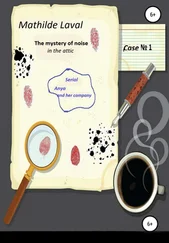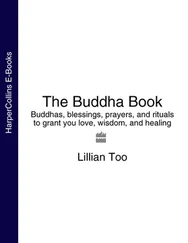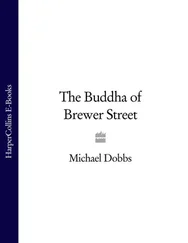AS THE WAR rages on families begin to leave their homes less and less. Gasoline is rationed. Tinfoil, saved. Victory gardens are planted on weed-strewn vacant lots and in kitchen after kitchen, the green bean casserole quickly loses its appeal. Mothers rip up their girdles to donate to the rubber drive and exhale fully for the first time in years. “Sacrifices must be made,” they exclaim. Cruel fathers cut down their children’s tire swings from the trees. The China Relief Committee reaches its target goal of ten thousand dollars and the mayor himself personally wires the good news to Madame Chiang Kai-shek. The assistant pastor spends another night out on the couch. Several of our children attempt to write to their Japanese friends but can’t think of anything to say. Others don’t have the heart to deliver the bad news. There’s a new boy sitting at your desk in Miss Holden’ s class. I can’t find your sweater. Yesterday your dog got run over by a car . A girl on North Fremont is discouraged by the postman, who tells her that only a traitor would dare exchange letters with the Japanese.
NEW PEOPLE BEGIN to move into their houses. Okies and Arkies who’ve come out west for the war work. Dispossessed farmers from the Ozarks. Dirt-poor Negroes with their bundles of belongings fresh up from the South. Vagrants and squatters. Country folk. Not our kind. Some of them can’t even spell . They work ten and fifteen hours a day in the ammunitions plants. They live three and four families to a house. They wash their laundry out of doors, in tin tubs in their front yards. They let their women and children run wild. And on the weekends, when they sit out on their porches smoking and drinking until late in the night, we begin to long for our old neighbors, the quiet Japanese.
AT THE END of summer the first rumors of the trains begin to reach us from afar. They were ancient, people say. Relics from a distant era. Dusty day coaches with coal-fired steam engines and antique gas lamps. Their rooftops were covered with bird droppings. Their windowpanes blackened by shades. They passed through town after town but made no stops. They blew no whistles. They traveled only after dusk. Ghost trains , say those who saw them. Some say they were climbing up through the narrow mountain passes of the Sierra Nevadas: Altamont, Siskiyou, Shasta, the Tehachapi. Some say they were heading toward the western edge of the Rockies. A timekeeper at the station in Truckee reports seeing a blind lifted and a woman’s face briefly revealed. “Japanese,” he says. Although it happened so quickly it was impossible to know for sure. The train was unscheduled. The woman looked tired. She had short black hair and a small round face and we wonder if she was one of ours. Laundryman Ito’s wife, perhaps. Or the old woman who sold flowers every weekend on the corner of Edwards and State. We just called her the flower lady . Or someone we might have passed by countless times on the street without really noticing at all.
IN AUTUMN there is no Buddhist harvest festival on Main Street. No Chrysanthemum Feast. No parade of bobbing paper lanterns at dusk. No children in long-sleeved cotton kimonos singing and dancing to the wild beating of the drums until late in the night. Because the Japanese are gone, that’s all. “You worry about them, you pray for them, and then you just have to move on,” says one elderly pensioner who lived next door to the Ogatas for more than ten years. Whenever he starts to feel lonely he goes outside and sits on a bench in the park. “I listen to the birds until I begin to feel better again,” he says. “Then I go home.” Sometimes several days go by and he doesn’t think about the Japanese at all. But then he’ll see a familiar face on the street—it’s Mrs. Nishikawa from the bait shop, only why won’t she wave back hello?—or a fresh rumor will float his way. Rifles were found buried beneath the Koyanagis’ plum tree. Black Dragon emblems were discovered in a Japanese house on Oak . Or he’ll hear footsteps behind him on the sidewalk but when he turns around there’s nobody there. And then it will hit him all over again: the Japanese have left us and we don’t know where they are.
BY THE FIRST FROST their faces begin to blend and blur in our minds. Their names start to elude us. Was it Mr. Kato or Mr. Sato? Their letters cease to arrive. Our children, who once missed them so fervently, no longer ask us where they are. Our youngest can barely remember them. “I think I saw one once,” they say to us. Or, “Didn’t they all have black hair?” And after a while we notice ourselves speaking of them more and more in the past tense. Some days we forget they were ever with us, although late at night they often surface, unexpectedly, in our dreams. It was the nurseryman’ s son, Elliot. He told me not to worry, they’re doing all right, they’re getting plenty to eat and playing baseball all day long . And in the morning, when we wake, try as we might to hang on to them, they do not linger long in our thoughts.
A YEAR ON and almost all traces of the Japanese have disappeared from our town. Gold stars glimmer in our front windows. Beautiful young war widows push their strollers through the park. On shady paths along the edge of the reservoir, dogs on long leashes strut. Downtown, on Main Street, the daffodils are blooming. New Liberty Chop Suey is crowded with workers from the shipping yard on their lunch break. Soldiers home on leave are prowling the streets and business at the Paradise Hotel is brisk. Flowers by Kay is now Foley’s Spirit Shop. Harada Grocery has been taken over by a Chinese man named Wong but otherwise looks exactly the same, and whenever we walk past his window it is easy to imagine that everything is as it was before. But Mr. Harada is no longer with us, and the rest of the Japanese are gone. We speak of them rarely now, if at all, although word from the other side of the mountains continues to reach us from time to time—entire cities of Japanese have sprung up in the deserts of Nevada and Utah, Japanese in Idaho have been put to work picking beets in the fields, and in Wyoming a group of Japanese children was seen emerging, shivering and hungry, from a forest at dusk. But this is only hearsay, and none of it necessarily true. All we know is that the Japanese are out there somewhere, in one place or another, and we shall probably not meet them again in this world.
This novel was inspired by the life stories of Japanese immigrants who came to America in the early 1900s. I have drawn upon a large number of historical sources, and although there is not room here to mention them all, I would like to list those that were most important to me in my research. I am particularly indebted to Kazuo Ito’s Issei: A History of Japanese Immigrants in North America and Eileen Sunada Sarasohn’s The Issei and Issei Women . Other important books include: East Bay Japanese for Action Presents “Our Recollections”; Stan Flewelling’s Shirakawa; Audrie Girdner and Anne Loftis’s The Great Betrayal; Evelyn Nakano Glenn’s Issei, Nisei, War Bride; Yuji Ichioka’s The Issei; Impounded , edited by Linda Gordon and Gary Y. Okihiro; Lauren Kessler’s Stubborn Twig; Akemi Kikumura’s Through Harsh Winters; Minoru Kiyota’s Beyond Loyalty; Lafcadio Hearn’s Japan , edited by Donald Richie; Ellen Levine’s A Fence Away from Freedom; Tomoko Makabe’s Picture Brides; Sayo Masuda’s Autobiography of a Geisha; David Mas Masumoto’s Country Voices and Epitaph for a Peach; Valerie J. Matsumoto’s Farming the Home Place; Mei Nakano’s Japanese American Women; Only What We Could Carry , edited by Lawson Fusao Inada; Donald Richie’s The Inland Sea; Bernard Rudofsky’s The Kimono Mind; Dr. Junichi Saga’s Memories of Silk and Straw and Memories of Wind and Waves; Etsu Inagaki Sugimoto’s A Daughter of the Samurai; Sonia Shinn Sunoo’s Korean Picture Brides; Ronald Takaki’s Strangers from a Different Shore; Nagatsuka Takashi’s The Soil; Linda Tamura’s The Hood River Issei; John Tateishi’s And Justice for All; Dorothy Swaine Thomas’s The Salvage; Yoshiko Uchida’s Desert Exile; Wakako Yamauchi’s Songs My Mother Taught Me; and Won Kil Yoon’s The Passage of a Picture Bride . Several lines of the mayor’s dialogue on this pagewere taken from a Department of Defense news briefing given by Secretary of Defense Donald Rumsfeld on October 12, 2001. I would also like to acknowledge my debt to Mary Swan, whose short story “1917” provided the inspiration for the first chapter of my novel.
Читать дальше
